The 10 Coolest Enterprise Servers Of 2021 (So Far)
Here are the coolest enterprise servers launched in 2021 that you need to know about.

10 New Servers You Need To Know In 2021
With new microprocessors being launched by Intel and AMD this year, the server market has been revamped with better performance tied with new capabilities launched by the world’s market-leading server vendors.
The worldwide server market hit $20.9 billion in the first quarter of 2021, representing an increase of 12 percent year over year, according to new data from IDC. Global server shipments climbed more than 8 percent year over year with a total of 2.8 million servers shipped in just the first three months of 2021.
The spike in both server shipments and server revenue is being driven by the modernization of business applications and data center infrastructure, the increase of critical workloads around emerging technology such as artificial intelligence, as well as the need for more efficient IT operations.
With the first half of 2021 in the books, CRN breaks down the 10 hottest enterprise servers launched this year.
For more of the biggest startups, products and news stories of 2021 so far, click here .
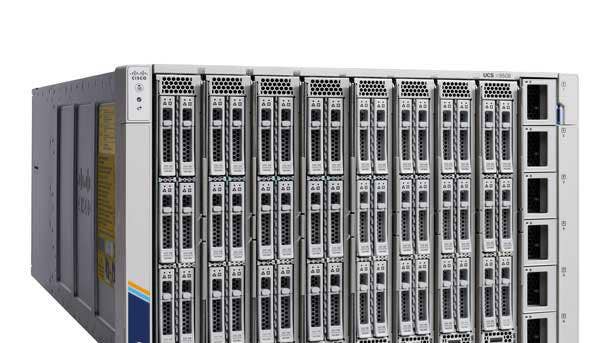
Cisco UCS X-Series
Cisco recently unveiled its next generation of UCS servers with Intersight software specifically designed for hybrid and multi-cloud. Cisco’s new UCS X-Series can manage both private data centers and public cloud resources to support distributed applications.
The UCS X-Series fabric allows users to pool compute resources, such as CPUs or GPUs, memory, or storage across multiple server nodes. Cisco said new rack and blade systems are ready for the next decade of industry innovation in processors, accelerators and computing interconnects thanks to the X-Series.
The X-Series is integrated with Cisco Intersight Cloud Orchestrator, a low-code, automation framework that can simplify complex workflows for IT teams so operations can easily orchestrate infrastructure and workloads and accelerate delivery of services. It’s also integrated with the Intersight Workload Engine for SaaS management and is built on an open-source Kubernetes and kernel-based virtual machine foundation.
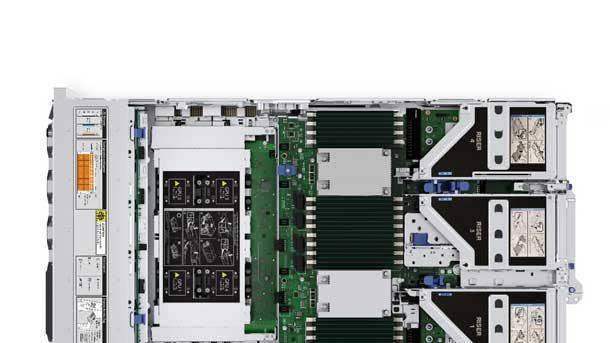
Dell PowerEdge XE8545
One of Dell Technologies’ biggest launches this year is the new Dell EMC PowerEdge XE8545 server which combines AMD and Nvidia technology designed for accelerated workloads and ideal for machine learning, HPC and GPU virtualization.
The new 4U PowerEdge XE8545 server combines the maximum core counts of two 3rd generation AMD EPYC processors with four of the highest performing NVIDIA A100 GPUs. PowerEdge XE8545 offers up to 128 cores of Milan CPUs, four Nvidia A100 GPUs, and optimized performance of Nvidia‘s vGPU software in a dual socket, 4U rack server. Dell increased the speed of storage with NVMe and reduced data latency with PCIe to accelerate I/O throughput, which prevents performance bottlenecks when organizations are executing on large data sets. Dell was able to do this by adopting PCIe Gen4 NVMe.
The PowerEdge XE8545 is one of the first servers on the market to have the new Nvidia NVLink baseboard with Nvidia’s A100 chips in it. The server is completely air cooled for greater efficiency and lower cost of operation.
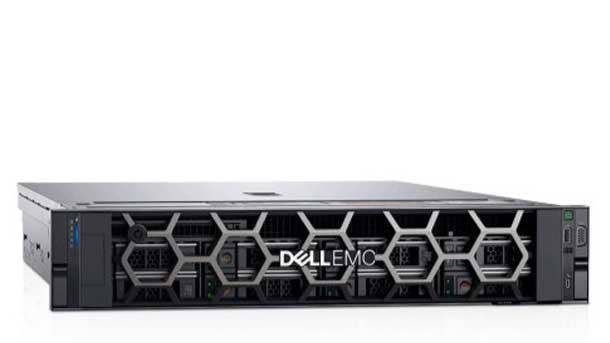
Dell PowerEdge R7525
Another huge Dell PowerEdge launch this year is its new R7525 Rack Server, a highly adaptable rack server that delivers powerful performance and flexible configurations. The 2U server includes up to two, 2nd or 3rd Generation AMD EPYC Processors with up to 64 cores per processor. In terms of memory, the PowerEdge R7525 delivers up to 32 x DDR4 RDIMM (2TB), LRDIMM (4TB) and bandwidth up to 3200 MT/S. AMD called its new EPYC processors, code-named Milan, the “highest-performance server processors in the industry, at the socket level and at the per-core level.”
The PowerEdge R7525 Rack Server includes 24 direct connect Gen4 NVMe that supports all flash vSAN Ready Node. Maximized storage and memory configuration options enable HPC, AI and rendering. Dell’s server has automated server life cycle management with scripting via the iDRAC Restful API with Redfish. The PowerEdge server is managed through Dell EMC OpenManage Enterprise, which is a systems management console that facilitates lifecycle management for PowerEdge servers in one console.
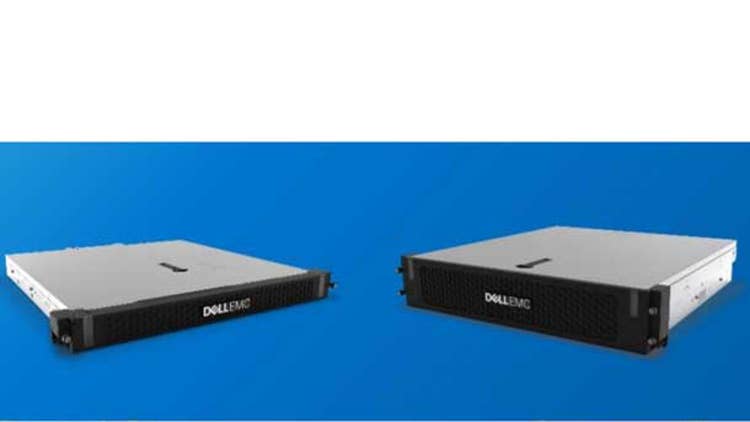
Dell’s Ruggedized Edge XR11 And XR12
As the edge computing market takes shape, Dell is diving into making edge optimized servers. Built to thrive in remote and harsh environments, Dell launched the new PowerEdge XR11 and XR12 ruggedized servers that bring enterprise performance and security to a durable form factor.
With a hardened chassis, minimal footprint and support for multiple accelerators, the Intel-based XR11 and XR12 short-depth servers are built for the growing demands of edge-based workloads. “With the advent of 5G and edge taking off, we have the next-generation of our edge and Telcom server with the XR11 and XR 12,” said Ravi Pendekanti, senior vice president of server solutions product management and marketing at Dell Technologies, during the sever launch. “We are seeing a lot more interest and demand based on both the edge and telecom industries with the new technology.”
The servers include third-generation Intel Xeon Scalable processors along with multi-accelerator support. The XR11 and XR12 are operational in extreme temperature ranges, dusty environments and NEBS Level 3 compliant for communications.
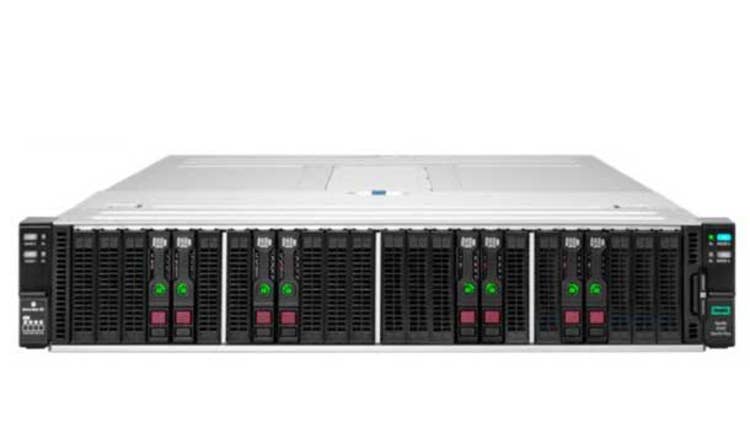
HPE Apollo 2000 Gen10 Plus
HPE’s recently launched its new Apollo 2000 Gen10 Plus system with the HPE ProLiant XL225n server. The HPE Apollo 2000 Gen10 Plus System is a shared infrastructure chassis with flexible support for up to 4 ProLiant XL225n servers powered by AMD EPYC processors. Server nodes can be serviced without impacting operation of other nodes in the same chassis for increased server up-time.
The system can be deployed with a single server, leaving room to scale as customer’s needs grow in a move to bring the power of supercomputing to any data centers HPE said. It is ideal for HPC applications in industry verticals like manufacturing, oil and gas, life sciences, and financial services. The Apollo 2000 Gen10 Plus supports a full stack of second- or third-generation AMD EPYC GPUs with support for processors over 240W in the ProLiant XL225n server.
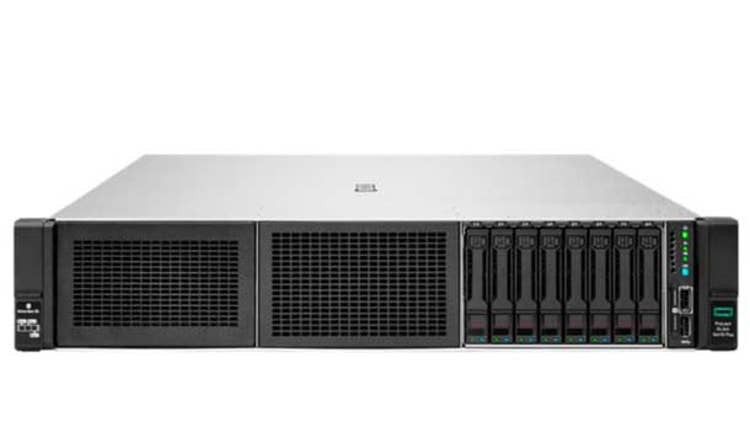
HPE ProLiant DL345 Gen10 Plus Server
Hewlett Packard Enterprise launched a brand new server line this year targeted for storage-optimized solutions for database workloads with the launch of the HPE ProLiant DL345 Gen10 Plus. The ProLiant DL345 provides up to 128 lanes of PCIe Gen4 to improve I/O throughput and reduces latency in a single socket design. Enclosed in a 2U server chassis, the one-socket server improves storage capacity across SAS/SATA/NVMe storage options, making it an ideal for applications such as structured/unstructured database management.
The server’s AMD third-generation EPYC processors provide HPE with unmatched performance, security, automation, and remote management capabilities to support a range of critical workloads essential to digital transformation, the company said.
In June, the company unveiled that it will combine HPE ProLiant servers with Nutanix’s Era, a multi-database operations and management offering, to provide Database-as-a-Service via HPE GreenLake.
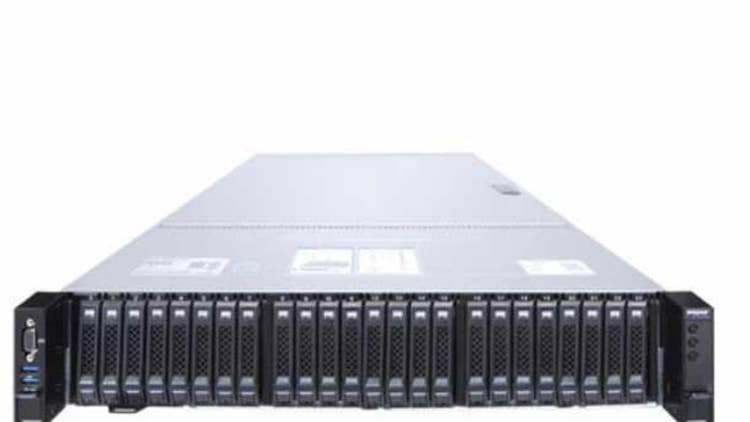
Inspur NF5280M6
Inspur’s new NF5280M6 is a 2U dual-socket high-end rackmount server with top-notch computing performance, compatibility and scalability. The China-based company’s new M6 server family features key products designed in line with open computing standards with the NF5280M6 embracing open software protocols, such as OpenBMC and Redfish, as well as open standard components like OCP3.0 network and E1.S storage.
Backed by Intel’s third-generation Xeon Scalable processors, the Inspur NF5280M6 focuses on application scenarios around AI, edge computing and multi-cloud. Inspur said the NF5280M6 server provides industry-leading deployment density, performance, hardware decoupling and quality, improving performance by 46 percent compared with Inspur’s previous server generation.
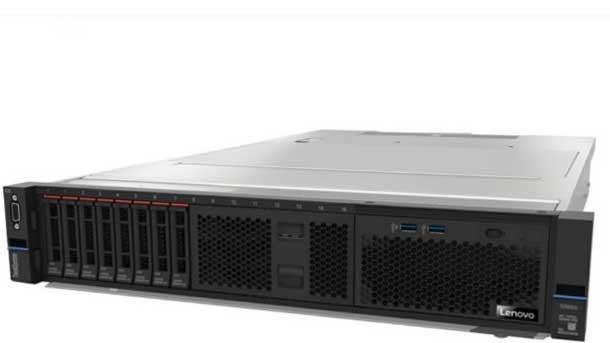
Lenovo ThinkSystem SR665
The new Lenovo ThinkSystem SR665 is a two-socket server with AMD new EPYC processors that features 128 cores and 128 Gen4 PCIe lanes to maximize server performance and decrease network bottlenecks critical workloads. Outfitted with up to 8x PCIe 4.0 slots, the 2U ThinkSystem SR665 rack server provides the networking scalability and speed necessary to ensure that I/O-intensive workloads such as software defined networking do not encounter bottlenecks that reduce efficiency.
The ThinkSystem SR665 aims to deliver the next era of solution performance for software-defined workloads, Big Data, VDI, and databases to match modern data centers demands for ever-expanding capability and performance. Specifically optimized to run demanding cloud computing workloads, Lenovo’s server has built-in security features to help protect against data integrity and firmware threats. The ThinkSystem SR665 has 32x DDR4 memory slots and a maximum 4TB using 128GB 3DS RDIMMs.
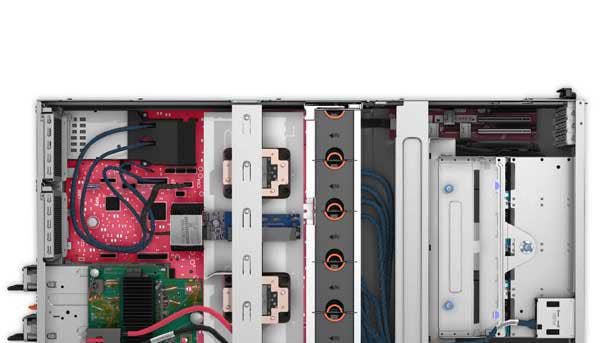
Lenovo ThinkSystem SR670 V2
One of the most powerful servers in Lenovo’s portfolio is the new ThinkSystem SR670 V2 server. The 3U rack-mount server platform with three modules is designed for high performance computing (HPC) and AI training workloads, supporting the vast NVIDIA Ampere datacenter GPU portfolio. The ThinkSystem SR670 V2 has up to two 3rd Gen Intel Xeon Scalable processors per node, with up to 2-TB of memory.
With six base configurations that support up to eight small or large form factor GPUs, the SR670 V2 allows customers the flexibility to configure PCIe or SXM form factors. One of those configurations features a Lenovo Neptune liquid to air heat exchanger that provides the benefits of liquid cooling without the adding plumbing.
Lenovo says the company’s system reliability, XClarity Controller management capabilities, and security infrastructure layer add to the value that the ThinkSystem SR645 brings to the data center.
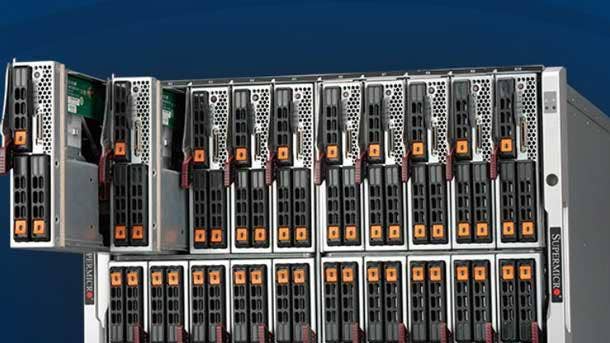
Supermicro A+ SuperBlade
One of the largest servers in Supermicro’s A+ server lineup is the new 8U SuperBlade with an AMD EPYC processor of up to 280W and hot-swap NVMe support. The new server has up to 48 DIMM slots, up to 12TB of DDR4-3200 memory per node, and up to 20 hot-pluggable single-socket server nodes for applications that can benefit from high compute density such as high-performance computing, virtualization and AI.
Supermicro says the SuperBlade is the highest density x86 mult-node server for enterprise cloud and HPC applications. It has open industry standard IPMI, Redfish APIs along with a full suite of management software including SuperCloud Composer.
Supermicro’s SuperBlade includes advanced networking such as HDR/EDR, InfiniBand and up to four 25 Gigabit Ethernet switches with add-on cards. The SuperBlade has up to 2 NVMe with optional mezzanine 4x NVMe per blade and can support up to 20x 1-socket or 2-socket blade servers or up to 10x 4-socket blade servers.